Disclaimer: This guide is not government-affiliated. Information provided as-is without warranty of accuracy. Contact your local housing authority to verify current information. | Last Updated: September 24, 2025
Indiana’s Section 8 game is rigged to make you quit—endless waitlists, closed doors, and zero mercy for people in crisis. But I’ve cracked exactly how to jump the line, spot real openings, and force the system to notice you using tactics you’ll never find on a government website. You need answers fast, so keep reading—I’m about to lay out the playbook that actually gets you housed here.
Critical Legal Info for Indiana
Indiana’s approach to housing vouchers is as no-nonsense as it gets—there’s no state law stopping landlords from saying no to Section 8, and in fact, Indiana law even blocks cities from making their own rules. No laws require landlords to accept Section 8—it’s legal to refuse. If the refusal unfairly targets protected groups, federal Fair Housing may apply. Log everything, stay persistent, and use every tool available to keep searching.
You’re Looking for Affordable Housing in Indiana—Here’s Why It’s Not Your Fault
Look, don’t waste a second feeling ashamed or like you screwed up. You’re in this mess because Indiana’s rent is a joke and nobody’s paychecks have kept up. Whether it’s that red eviction notice staring you down, a hospital bill that nuked your savings, or just the math of groceries vs. rent not adding up—nobody ends up needing Section 8 because life was easy. And no, you’re not alone. This is happening to way more people than you think.
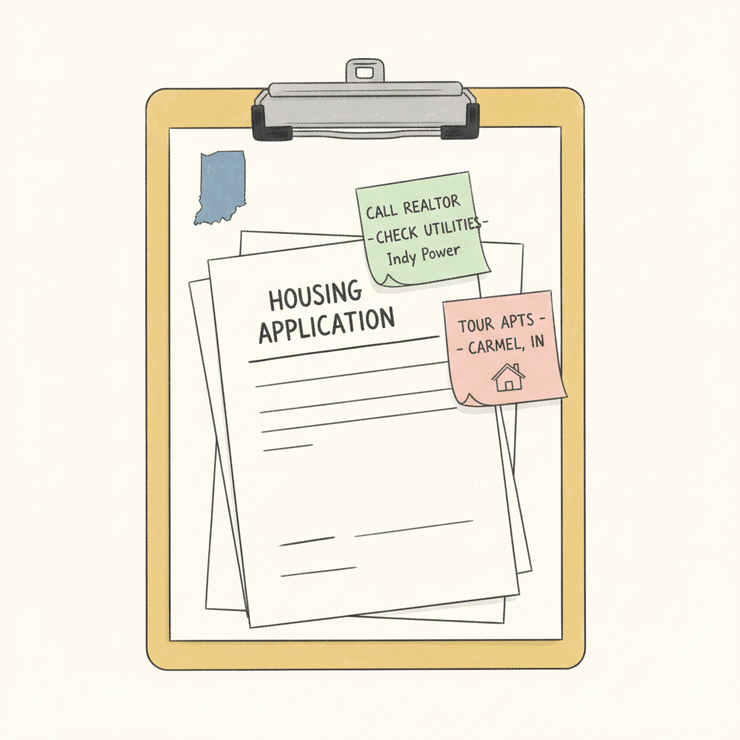
The truth nobody tells you: those late-night Google searches for “Section 8 Indiana open waitlists” or “emergency housing help” aren’t desperate—they’re necessary. The system is set up to make you quit. Endless forms, dead phone numbers, nobody calling you back for months. They want you to get tired and disappear. But you’re smarter than that, and I’ve got the hacks they don’t want you to know.
Here’s what actually works in Indiana:
- Check every waitlist, every week. Don’t just look once—these lists open and close with zero warning. Google “[your county] housing authority” and look for words like “Section 8 waiting list status” or “public housing application.” If you’re in a hurry, check the big cities and the tiny towns. Smaller counties open up more often, and the lines are sometimes shorter.
- Emergency preferences are real—use them if you qualify. If you’ve got an eviction notice, are homeless, or escaping violence, say it everywhere you apply. There’s a checkbox or a question—don’t skip it. Some places bump you ahead if you can prove it (bring paperwork: eviction, shelter letter, police report, whatever you’ve got). Yeah, it’s invasive, but it’s how the line actually moves.
- Get your name on every possible list—don’t wait for a callback. The biggest mistake? Waiting for one office to get back to you. Apply everywhere within driving distance. “Portability” is a thing—if you get a voucher in one county, you can often use it somewhere else after a year. Nobody advertises this.
- Don’t trust outdated websites or social media posts. Some lists claim to be open but actually closed months ago. Always call the housing authority directly—even if you sit on hold forever. When you get someone, ask: “Is your Section 8 or public housing waitlist open right now?” and “Do you have emergency preference for eviction or homelessness?”
Yeah, it’s a grind. But this is how you beat the system instead of letting it beat you. Don’t waste time blaming yourself. Start moving, start applying, and don’t stop until you’ve got that approval letter in your hand. You’re not crazy—you’re just fighting a game that’s rigged. Let’s get your name to the top of the pile.
Section 8 Is Available in Every Indiana County—Here’s How to Use That
Section 8 is everywhere in Indiana. Don’t buy the lie that it’s “just for big cities.” Section 8 runs in ALL 92 Indiana counties—every single one, no exceptions. Read it again: all 92. That means Marion • Lake • Allen • Hamilton • St. Joseph • Elkhart • Tippecanoe • Hendricks • Vanderburgh • Porter • Johnson • Monroe • Madison • Clark • Delaware • LaPorte • Vigo • Howard • Bartholomew • Hancock • Floyd • Kosciusko • Boone • Morgan • Wayne (and every other county on the map).

Here’s what actually happens: housing authorities aren’t always one-per-county. Some cover a bunch of counties, some just one. So if you live in Wayne County and their list is closed (which happens all the time), it doesn’t mean you’re stuck. Maybe Madison’s housing authority covers your area and their list is open. This is the game: you need to check every housing authority within 100 miles, not just your hometown. Seriously, cast your net wide. If you only apply in one spot, you’re just waiting to lose.
Critical tip: Apply to every list you can find. The system is brutal—waiting lists slam shut overnight, and there’s zero warning. Indianapolis might be closed for years (not exaggerating—years), but Elkhart or Boone could suddenly open up and let you in. The truth nobody tells you: nobody is going to call you when a list opens. You have to hunt. Google “[your county] housing authority” and hit every nearby county, too. And don’t sleep on neighboring states—Ohio, Kentucky, Illinois. Sometimes their lists are shorter, and yes, you can apply if you’re willing to move.
Now, about those wait times: This is where most people give up. Some cities run a lottery system—maybe you get lucky and your number comes up in a few months. Most places? Get ready to wait literal years. I’m not sugarcoating it: you could be on a list until your kid is in high school. And it can all change tomorrow. Lists that were open yesterday close today. Or they purge everyone and make you re-apply. This system has zero mercy for people who don’t check and re-check religiously.
Yeah, it’s messed up, but here’s how to deal: play every angle, apply everywhere you can, and never trust an old waiting list update. The only way you get in is by flooding the system with applications and watching like a hawk for openings.
What You Need to Know About Section 8 in Indiana
Alright, here’s what actually happens with Section 8 in Indiana—no sugarcoating, no government-speak.

What Section 8 Actually Is
Section 8 isn’t some magic free rent. It’s a voucher. The housing authority pays a chunk of your rent straight to your landlord, and you cover the rest—usually about 30% of whatever officially counts as your income. This isn’t charity. It’s the difference between sleeping in your car and having a roof when your paycheck just can’t stretch any further. And don’t get it twisted: you have to be making way less than most people in your city. The cutoff is 50% of the “Area Median Income” (AMI), but here’s the truth nobody tells you—unless you’re under 30% of AMI (think: no savings, barely making it), you basically have zero shot at getting moved up the list. If you’re flat broke, you’re who they’re actually looking for. If you’re just “low income” but not “basically nothing” income, you’re going to be waiting a long time.
The Current Landscape for Applicants
Right now, Indiana’s got about 146,000 people living in some kind of subsidized housing, but if you think that’s a lot, wait until you see the line. Plan for 17 months of waiting—yeah, that’s the average wait. You could get lucky, you could be waiting two years, nobody cares. That’s still better than most of the country, but it’s a year and a half just stuck in limbo. The worst part? The lists close without warning. You check one day, they’re open. Next day? Gone. And sometimes they stay closed for years. Don’t waste your time applying for the wrong county either—they don’t care if you’re desperate. Some counties (like Marion) only take applications directly through their local office. The state won’t help you cut the line.
Here’s what they never put in the brochures: funding gets slashed all the time. Suddenly, they’re “not accepting applications right now” or “paused due to lack of funding.” Rules change overnight. One day you qualify, the next day, they change the paperwork and you’re out. You have to hustle—check back constantly, keep your docs ready, and don’t trust that anyone’s going to notify you if the rules change.
Common Misconceptions
Let me be real with you: Section 8 is not first-come, first-served everywhere. Some counties run a straight-up lottery. Others have “preferences” (like if you’re homeless, have kids, or are a veteran), and some are basically chaos. If someone tells you there’s a guaranteed way to get in faster, they’re lying. And if anyone tries to charge you a fee to apply—run. That’s a scam. All real programs are 100% free to apply. If you see fees, you’re about to get ripped off.
One more thing: there’s no magic universal list for Indiana. Every county, every region, they’ve got their own rules, their own system, and most of the websites are so outdated they might as well be in Morse code. Always double-check what you find, and never assume that what worked in one county will work anywhere else. This is all about being relentless and never trusting what you hear until you’ve verified it yourself.
Your Step-by-Step Section 8 Application Plan for Indiana
Here’s what actually happens if you want a shot at Section 8 in Indiana: you have to be faster, more organized, and more relentless than the next person. No sugarcoating—it’s a race against every other desperate family, and the system is NOT built for you to win. So, here’s exactly how you play to win anyway:
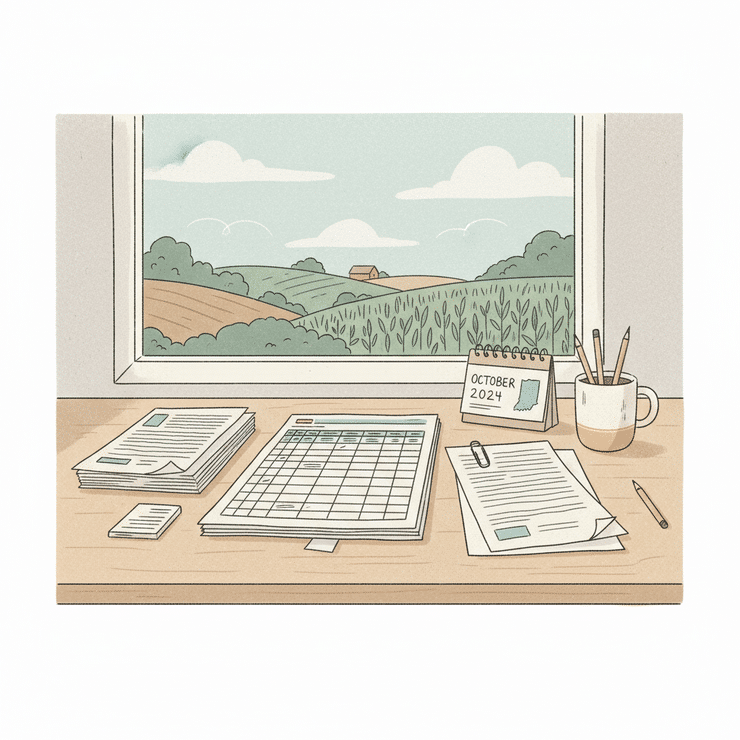
First: Google “[your county] housing authority” and then do the same for every neighboring county within 50 miles. Don’t assume you know all the counties—map them out. Do this TODAY, not next week. Lists open with no warning and close in hours. If you’re not watching all of them, you’re out before you started.
Next, get your paperwork together RIGHT NOW. I mean it. Birth certificates, social security cards (for everyone in your household), last 3 pay stubs, bank statements, current lease, and anything medical or disability related. If you wait until the list opens and you’re missing even one page, you’ll lose your spot. The truth nobody tells you: missing paperwork is why half the people never get off the waitlist. Don’t be that person.
Make a spreadsheet. Not a sticky note, not a pile of screenshots. Spreadsheet. Put columns for: Authority Name, List Status (open/closed), Date Applied, Login Info, and Next Check Date. Update it every time you apply or hear back. You need to track this like your life depends on it, because in a way, it does.
When you call, use this script: “Hi, I need to know if your Section 8 list is open and when the next opening might be.” That’s it. Don’t explain your whole situation; they hear 100 sob stories a day and don’t care. Be direct, get your answer, hang up. If they say it’s closed, ask when it last opened and if there’s a notification list. Some will actually tell you, some will be cagey—don’t take it personal, just note it on your spreadsheet.
When lists open online, be ready for chaos. The truth: the website WILL crash. Have every required document scanned and saved as PDFs, ready to drag and drop. Set alarms for the opening time, and log in 10 minutes early. Refresh constantly. It’s not fair, but speed matters—if you wait, you’ll get locked out. If the site glitches, don’t panic—keep refreshing until you get through. If you miss it, add the next check date to your spreadsheet and move on.
Follow up every 30 days—no more, no less. Use this line: “Just checking my status.” Don’t call at 29 days (they’ll get annoyed), don’t wait until 31 days (they’ll forget you). You want to be the applicant they remember for being persistent, not a pest. And yeah, it’s a grind, but that’s how people actually get housed. Nobody’s going to chase you down—you have to chase them.
Yeah, it’s messed up, but this is how you make the system work for you. Don’t let anyone, especially the authority, tell you to just wait patiently. That’s how people wait years and get nothing. Hustle, organize, and keep your name at the top of their minds.
How to Find Section 8 Housing Help in Indiana
Here’s what actually happens when you start looking for Section 8 help in Indiana: you get buried in dead links, ancient waiting list info, and a hundred places that just send you somewhere else. So skip the noise—search SMART. Google these EXACT phrases, no fluff: “[county] housing authority waiting list”, “Indiana Section 8 application”, “affordable housing [your zip code]”. If you get cutesy or broad, you’ll waste hours and end up right back where you started. Use those phrases, swap in your county or zip, and ignore anything that isn’t an official site or an announcement about open lists.
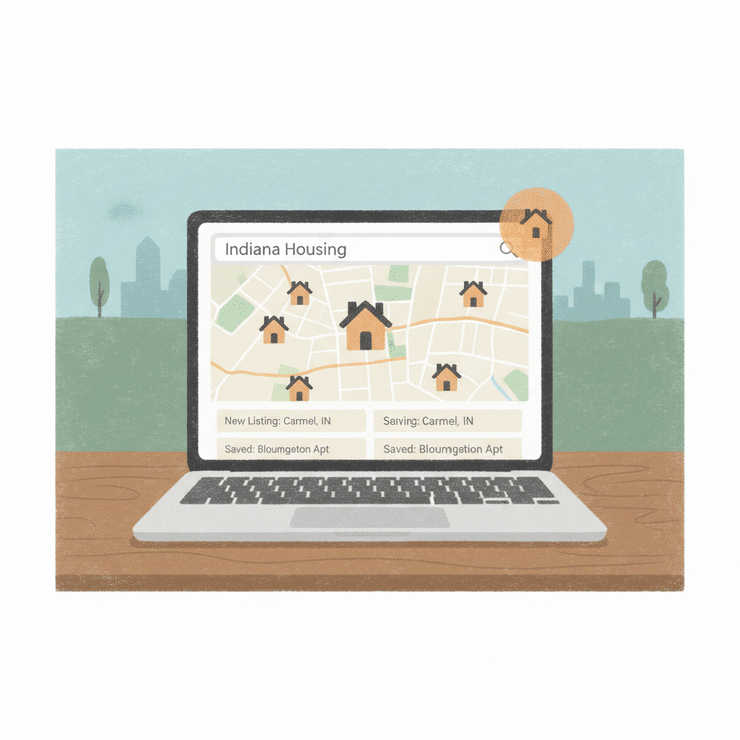
Facebook Groups are a goldmine—WAY faster than official sites, because people post real-time updates when a waiting list cracks open. Join groups like “[City] Housing Authority Updates”, “Section 8 Indiana”, and “[County] Affordable Housing” (put your county or city in the brackets, obviously). Turn on notifications so you get alerts instantly. People in these groups will drop openings, and honestly, you’ll see them before the housing authority even updates their own website (which, let’s be real, looks like it hasn’t been touched since 2008).
Here’s the truth nobody tells you: not all nonprofits are actually helpful. Some of them just pass you off to another number, and you start the loop all over. That’s why you hit up those Facebook groups—ask in the group who actually got help and from where. The people in the trenches know which nonprofits actually get things done, and which ones just collect your info and ghost you.
If you do end up on a housing authority website, don’t let the maze suck you in. Skip straight to the “News” or “Announcements” section—that’s where they’ll post if a waiting list is opening. Don’t bother reading all the other tabs about “programs” or “resources,” because most of it is just filler or years old. Find the list opening, and focus your energy there.
Yeah, it’s messed up, but here’s how to deal: if you are homeless, fleeing domestic violence, disabled, or in a family unification program, you can legally jump ahead on the waitlist. Don’t let them brush you off—ask point-blank about emergency preferences and reasonable accommodations. Use those exact phrases. Every housing authority is required to have a process for this, but they won’t volunteer it unless you push. This is the toolbox they hope you don’t open—so use every tool you’ve got.
What to Expect from Indiana Section 8—The Good, Bad, and Ugly
Alright, here’s the straight-up truth about Section 8 in Indiana. Forget the sugarcoating—this is what you’re really walking into.
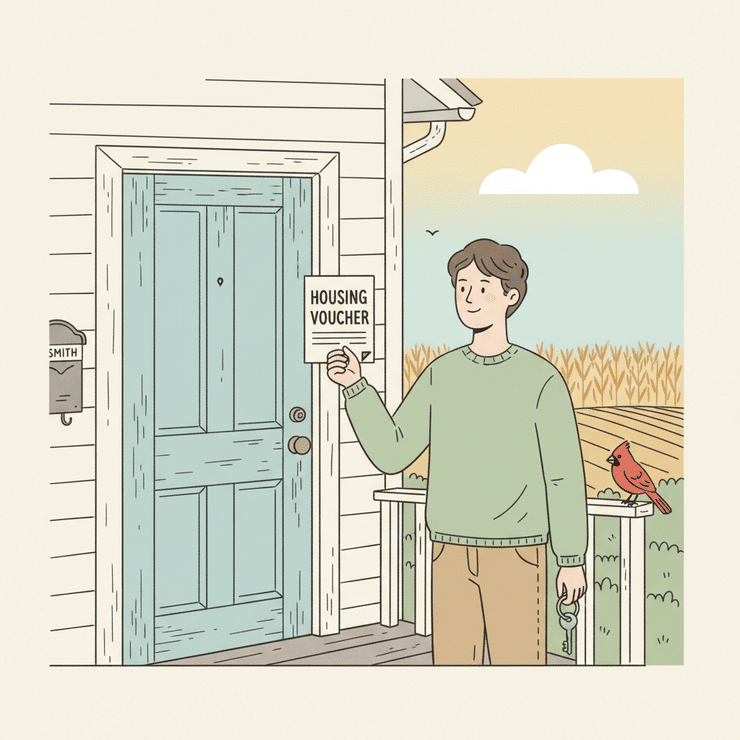
The Good
If you actually get a voucher, you’re golden: you’ll only pay 30% of your income for rent. That’s not a typo. If you’re barely scraping by, this can be the one thing standing between you and having to couch surf or sleep in your car.
Here’s what nobody brags about but absolutely matters: Indiana’s average wait for Section 8 is 17 months. That’s not “quick” but compared to Chicago or the coasts, it’s basically express service. If you’re in a smaller, rural county, sometimes the wait is under a year—BUT you have to catch the list when it opens (and they never warn you, so be ready to drop everything).
And yes, Section 8 can actually get you into safer neighborhoods and better schools. If you’ve got kids or just want to sleep at night, this is huge. The real trick? Be willing to move. The more open you are about where you’ll live, the better your odds. Don’t get stuck only looking in Marion or Lake County—cast a wide net.
The Bad
Here’s what actually happens with inspections: they’re out for blood. One missing smoke detector battery? Boom, fail. Broken window latch? Fail. The smallest thing can hold up your move for weeks. The property has to pass Housing Quality Standards (look that up, memorize the checklist, and double-check EVERYTHING—don’t trust the landlord to know or care).
The truth nobody tells you: waitlists close with zero warning. Not just for months—sometimes for years. You could be waiting over 2 years in places like Indianapolis or Evansville, and if you miss a list opening, you’re out of luck until the next cycle (which could be 2027, no joke).
And don’t get too comfy if you’re “on the list”—funding cuts or rule changes can freeze everything, and you’ll get nothing but radio silence for months. No updates, no courtesy calls, just a black hole.
Let’s talk landlords: some straight-up won’t take Section 8, and the ones who do might make you jump through extra hoops—extra paperwork, extra background checks, sometimes even a higher deposit. Expect rejection, and don’t take it personally.
The Ugly
Yeah, it’s messed up, but here’s how it really works: the system is slow, cold, and doesn’t care about your situation. You can do every single thing right, call every week, submit your paperwork early, and still get nothing. Or worse—get stuck in “processing” forever, with nobody returning your calls.
Scams are everywhere. If anyone—ANYONE—asks for money to “speed things up” or “guarantee a spot,” walk away. The application is free. No priority placement. If you pay, you’re not getting a voucher—you’re getting robbed.
And for the million-dollar reality check: the average person stays in subsidized housing for over six years. This is not a quick fix. If you want a magic solution, Section 8 isn’t it. But if you can play the waiting game and keep hustling, it can change your life. Patience and resilience—those are your best weapons here.
Take Action Today
Next Steps for Getting Section 8 in Indiana Right Now
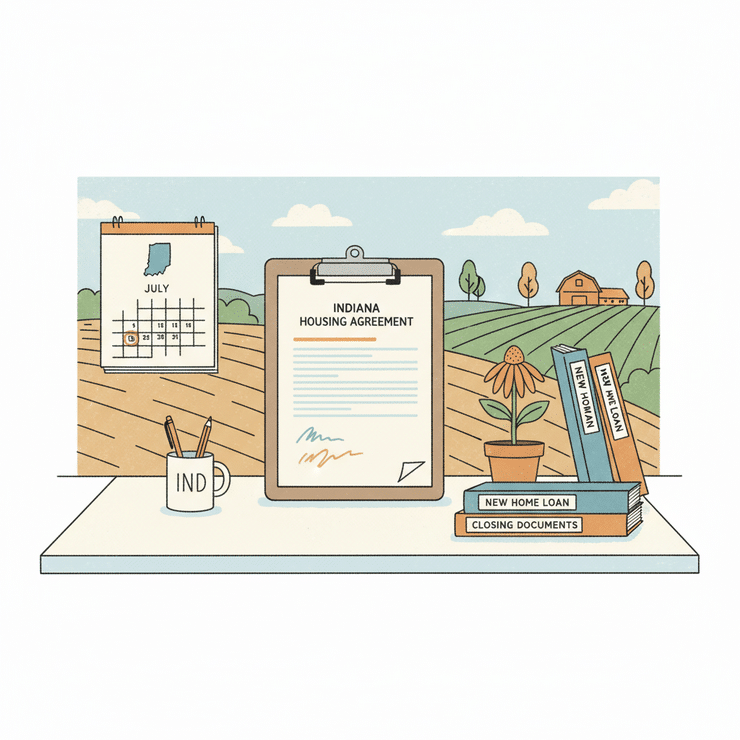
Here’s what actually happens: if you wait until you’re desperate, every list will be closed or “temporarily paused.” So, don’t waste a single hour. First, make your list of every single housing authority within 50 miles—yes, that means the tiny towns too, not just the big cities. Google “[your county] housing authority” for each county nearby, but be ready: half the websites are ancient, some links are dead, and you’ll have to dig. Write down every name, even if you think you’ll never want to live there—options are everything.
Before you even touch an application, gather all your docs: Social Security cards, IDs, proof of income, past landlord info, anything you think they could possibly ask. If you’re missing something, start the process to get a replacement today—don’t wait, because missing paperwork will stall you for months. The truth nobody tells you: you only look organized if you do all this up front. Housing authorities love to lose your stuff or say you never sent it.
Next, join all the Facebook and online groups people talk about—these are where real people post when lists actually open (because the official websites are always two weeks behind). Set calendar reminders—not a maybe, a must—to check every waitlist and follow up every 30 days. If you don’t, you’ll miss those tiny 24-hour openings and have to start from the bottom again. No exceptions, no excuses.
If you might qualify for emergency or special preferences (like homelessness, disability, domestic violence), don’t wait for them to offer it—bring it up on every single call, email, or application. Say the phrase out loud: “I need to know if you have any emergency or preference categories right now.” Most staff won’t mention it unless you push. Yeah, it’s messed up, but here’s how to deal: be annoying, be loud, and don’t let them brush you off.
Don’t Wait for a Perfect Moment
Straight up: there is never a perfect time to apply. Lists open and close with zero warning—sometimes they’re open for a day, or even just an hour. If you’re waiting for things to “settle down,” you’re going to wait forever and miss every shot. Apply everywhere, now. Even if you think you won’t want to move, get on the list. You can always say no later, but you can’t go back in time once it’s closed.
Remember: You’re Not Alone
The system is built to wear you down. Most people give up, and that’s exactly what the gatekeepers count on. But you’re not most people, because you’re still reading this and actually doing the work. Keep pushing. Keep tracking your apps. Keep showing up—even if it feels pointless. That’s how you win. You’ll get through this, and trust me: the minute you do, people will start asking you how you pulled it off. You’ll be the one with the real answers.